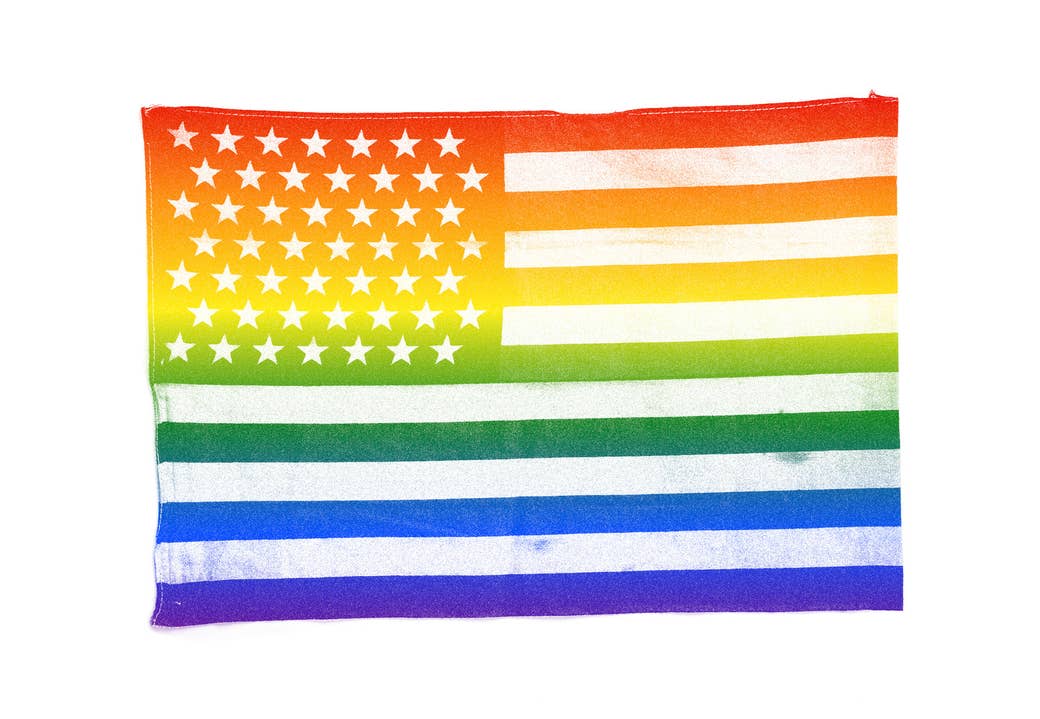
LGBTQ adults in the United States are mostly women, religious, and under 40 years old, according to a new survey conducted by Whitman Insight Strategies and BuzzFeed News.
The poll, taken by 880 LGBTQ Americans across the country, is one of the most thorough surveys of its type, asking more than 100 questions about gender, sex, politics, family, and discrimination.
LGBTQ people make up about 4% to 5% of the United States, but there have been few major national polls to date on how they differ from one another and live their lives.
The results seems to affirm some stereotypes and studies, such as that lesbian and bisexual women are smoking more, while gay men are drinking more. The poll finds that gay men also have more sex than lesbian women, while other findings may be more surprising: More than half of LGBTQ Americans are Christian, and nearly half of all LGBTQ people identify as bisexual or queer.
LGBTQ Americans are often described as a "community," and historically, LGBTQ people have faced similar types of discrimination for failing to meet strict gender norms.
But the experiences of lesbian, gay, bisexual, transgender, and queer people can be starkly different — as this poll reveals. When a bisexual man in Texas was asked what it meant to be LGBTQ, he responded: “I’m not trying to be a part of that movement. However, I don’t knock them for that.” A lesbian in New Hampshire felt differently and said she’s “part of a vast beautiful community that has an incredibly rich history, even though there are people who would like to erase it.”
Sexual orientation
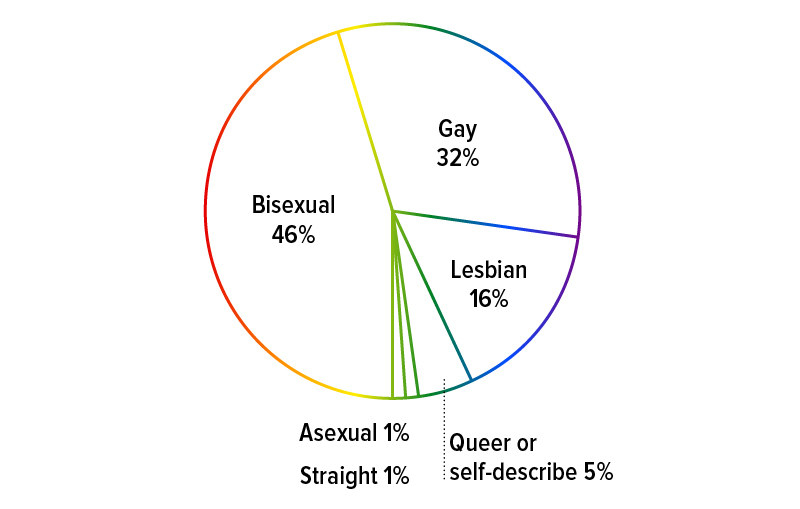
Of the 880 people who identified as LGBTQ for this survey, most of them — 55% — are women. Men account for 41%, while those who identify their gender as queer, nonbinary, or self-described make up the remaining 4-5%. (The margin of error overall is plus or minus 3.3%.)
Twice as many people identify as gay than as lesbian — 32% to 16%.
This is possibly explained by the poll's starkest finding: Nearly half — 46% — of the LGBTQ population identifies as bisexual, which then skews heavily female and younger and tends to be more racially diverse. People who identify their orientation as queer, asexual, or self-described make up 6% of participants.
With only 51 respondents, transgender people are the smallest group in the survey. Results based on such a small number of respondents have a much larger margin of error (plus or minus 14%, in this case) and should be interpreted with caution.
Overall, LGBTQ people are 67% white and 33% nonwhite, which is close to the national census figures.
The age of LGBTQ Americans

Most adults who said they’re LGBTQ are under 40, with nearly double the rate of people identifying that way between the ages of 18 and 39 than in older generations. Recent studies have shown that more people are coming out at younger and younger ages.
More than two-thirds of respondents across generations said coming out made them happier. But not all have come out — 55% said they're out, but 38% said they're only out to some people or in certain places, while 7% said they are not out at all. Among bisexual people, 53% are out in limited contexts, and 11% are not out at all — making them the least out group.
On average, LGBTQ people came out at the age of 21. They said they knew they were LGBTQ just shy of 17 years old, with gay and transgender people being the youngest, at 14 years old, while lesbians said they knew later, at 19.
When LGBTQ people come out, they're most likely to first tell a friend (62%), their mother (17%), a sibling (14%), or a former significant other (12%). Only 7% told their dad first.
Overall, 21% said they had to lie about being LGBTQ at work, and 12% reported discrimination in the workplace based on their sexual orientation or gender identity.
Plans for getting married
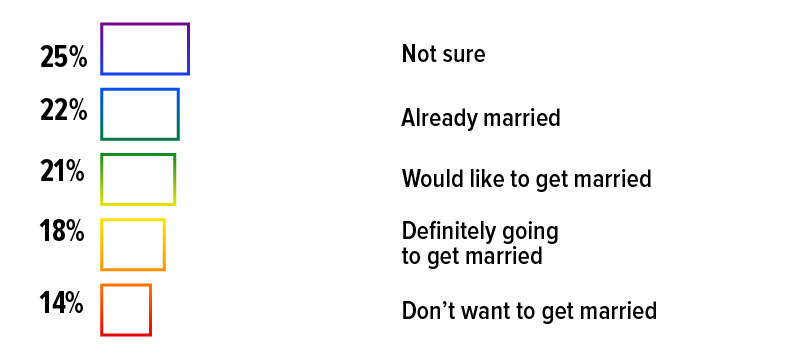
Three out of five LGBTQ Americans believe getting married is a "strong political/social statement," and roughly that many want to get married, would like to get married, or already are. Only 14% don't want to marry.
When it comes to legalizing polygamy (marriage to more than one person), 31% of LGBTQ people support it, while 42% are opposed. Support for changing the law is highest among people who are transgender (55%), queer (44%), and bisexual (37%). Fewer than a quarter of lesbians and gay people support it.
Plans for having children
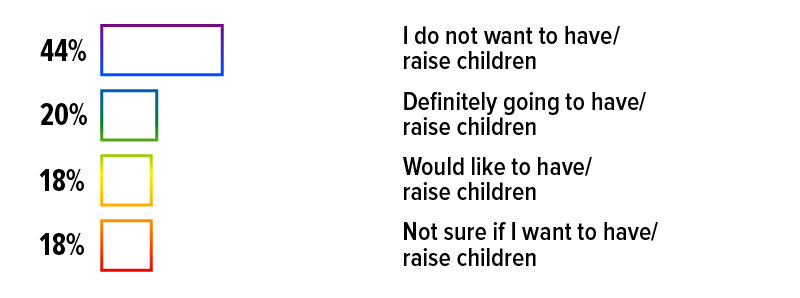
Most LGBTQ people said they don't want kids or aren't sure if they do, with gay men the most solidly in this camp — only 5% of gay men said they would definitely have kids, and 55% said they don't want them. Bisexual people were a more mixed group, with 51% saying they would have kids or would like to.
Yet across the board, a majority of LGBTQ people feared their children would be bullied because of their parents’ sexual orientation or gender identity, with 56% expressing that concern.
Fourteen percent of LGBTQ people, meanwhile, agreed with the statement that having two parents of the opposite sex is best for raising children; four times as many disagreed.
Frequency of having sex
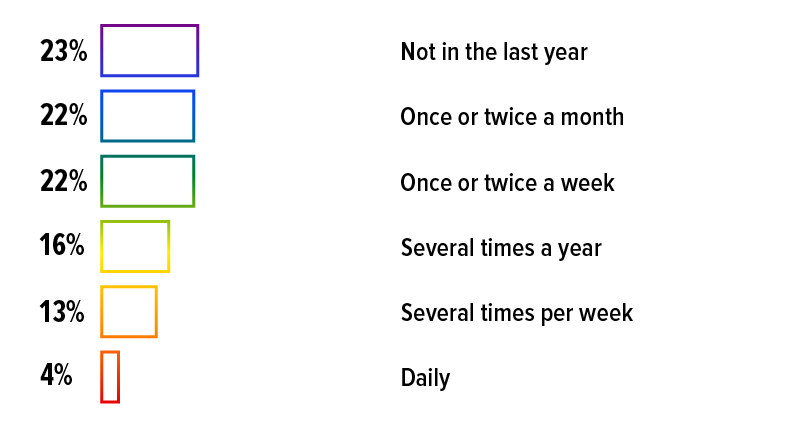
Bisexual people said they are having more sex than their gay, lesbian, and queer peers — 29% of bisexual people report having sex once or twice a week, and 15% of them several times per week. Eighteen percent of gay people have sex once or twice a week, and 14% have it several times per week.
Lesbians reported having the least sex, with 35% abstaining the last year, 19% having sex several times per year, 25% doing it once or twice per month, and 4% having sex several times a week. Half of lesbians report no sex with a partner for six months or more, compared with 35% of gays and 27% of bisexuals.
Gay men have the most anal sex (32% of the time), but they do that less than oral sex (44% of the time). Lesbians are split evenly between oral sex and finger penetration at 31%. Bisexual and queer people tend to dabble more across the board, though bisexual people report more vaginal intercourse than any cohort.
Political identity
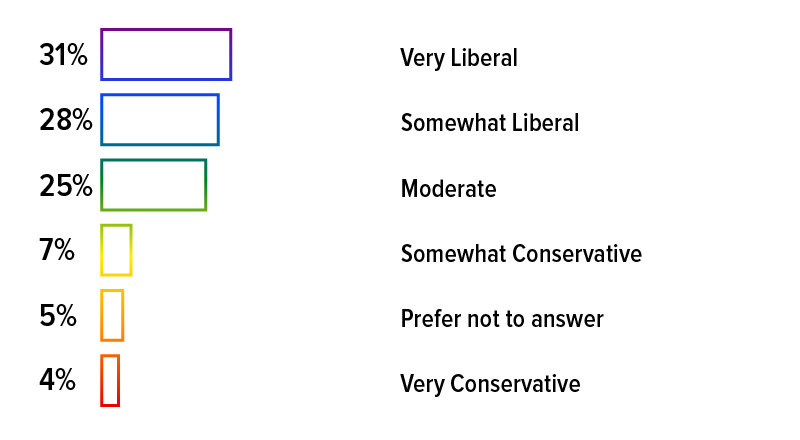
LGBTQ people fall decisively on the left of the political spectrum, but not exclusively. Sixty-five percent consider themselves Democrats, and 21% are independents. Just 12% are Republican; the remaining 3% have other affiliations.
In the 2016 election, 59% went for Hillary Clinton and 14% for Donald Trump; a full fifth of LGBTQ people said they didn't vote that year.
Overall, 88% are registered to vote, and 67% said they vote in state and federal elections. Lesbians and gay people are most politically involved — between 12% and 16% donate to political campaigns and organizations. Bisexual people, who were generally younger than gay people and lesbians, topped out the group and said they're least likely to be politically involved at 32%.
On the hot-button issue of religious liberty — such as the big wedding-cake case that was recently decided at the Supreme Court — 16% think shopkeepers should be allowed to turn away LGBTQ customers based on religious objections. In turn, 69% disagreed and 15% were neutral.
Seven percent said a business refused to serve them for being LGBTQ, while 6% reported being discriminated against in housing.
On the issue of where transgender people use the restroom, 16% said schools should be allowed to make trans students use restrooms based on their sex at birth, not their gender identity; 65% disagreed.
Religious affiliation
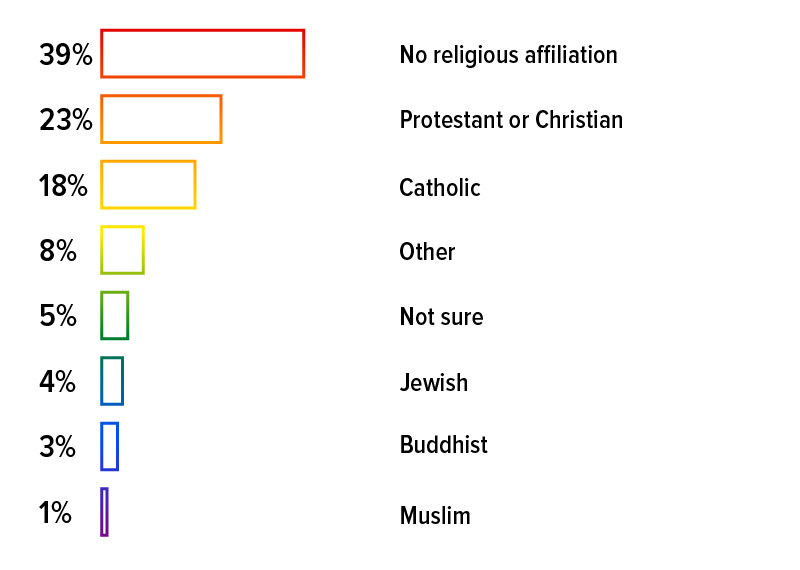
Female LGBTQ people smoke tobacco more than their male counterparts — 24% to 18%. That trend also applies to pot, with 20% of women smoking it, compared with 18% of men. Bisexual people smoke more than other sexual orientations — 23% report using pot, and 26% report using tobacco.
In contrast, GBTQ men outdrink LGBTQ women 50% to 43% — and gay men outdrink lesbians 51% to 40%.
BuzzFeed News will post more results in the coming weeks. Stay tuned! ●
UPDATE: The full topline results are now posted here.
METHODOLOGY: Whitman Insight Strategies fielded an online quantitative survey among 880 self-identifying LGBTQ Americans through Research Now. Field dates were from May 24 to June 1, 2018. Respondents were screened to determine sex assigned at birth, gender identity, transgender identification, and orientation to appropriately define the audience. The makeup of the N=880 self-identified LGBTQ Americans includes 265 gay (30%), 129 lesbian (15%), 403 bisexual (46%), 51 transgender (6%), and 74 queer, nonbinary (8%) individuals.
The margin of error at the 95% level of confidence for the total sample is ± 3.3% and is slightly larger for any findings among the individual LGBTQ audiences.
